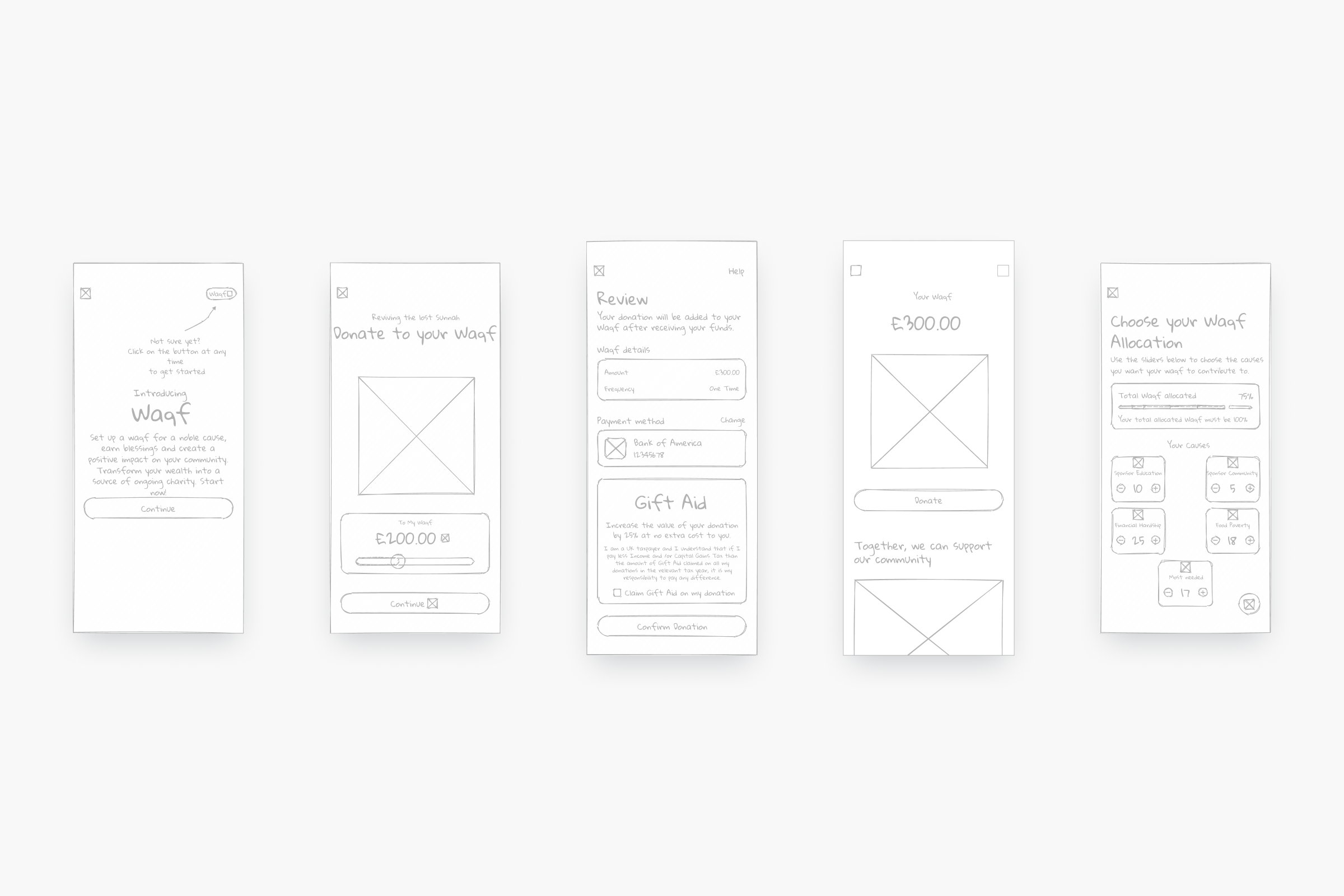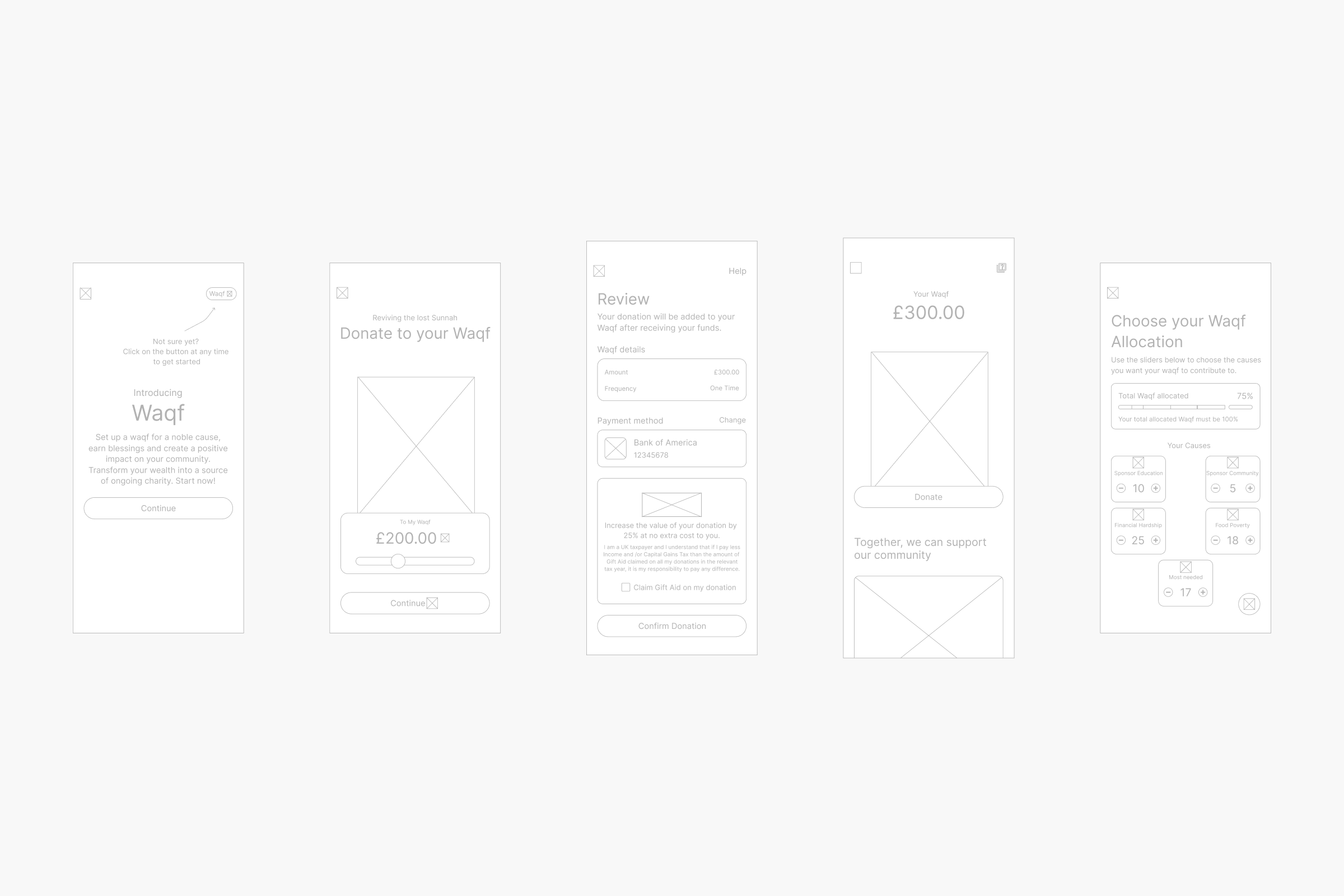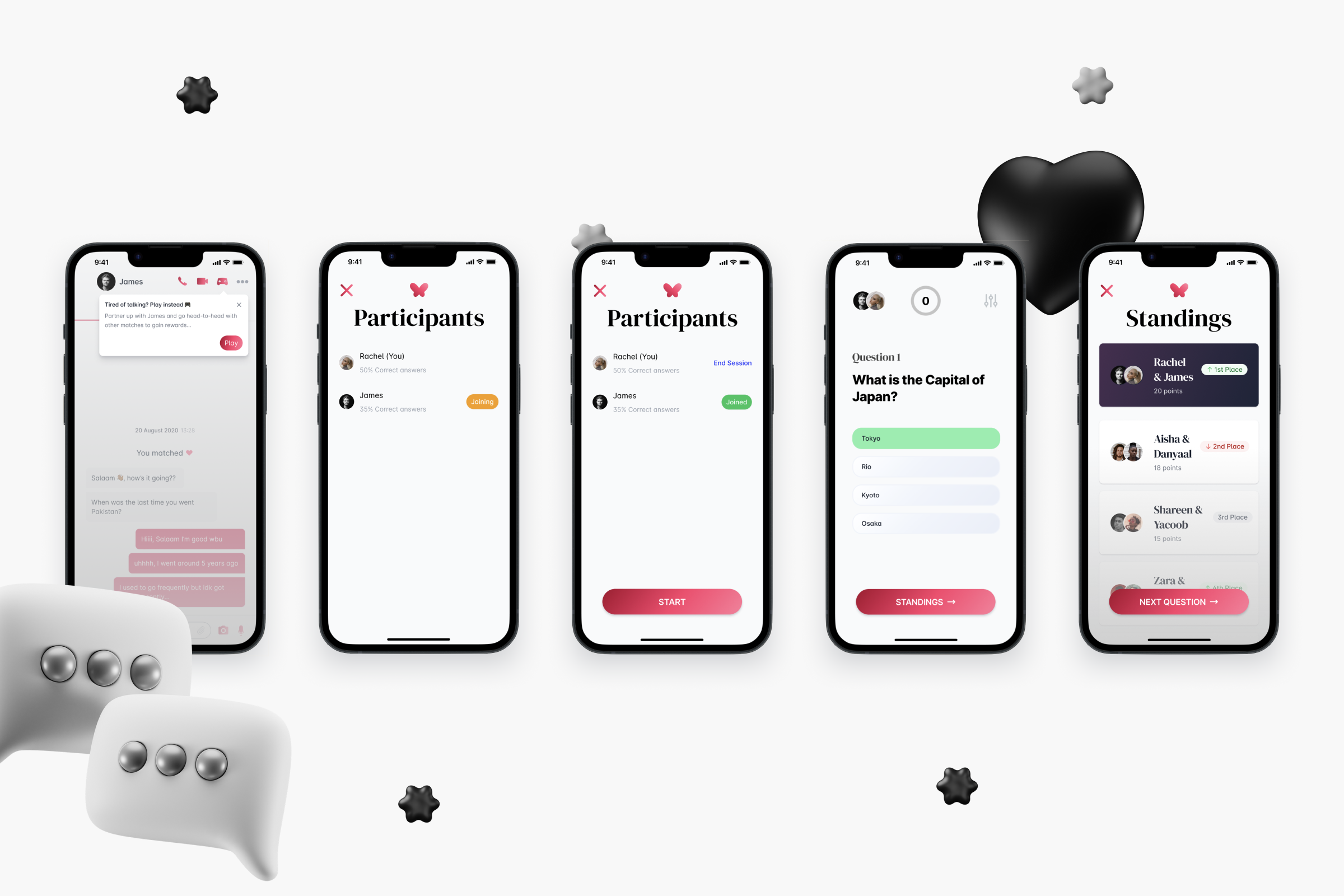Waqf
Endowment Launch Raises £140K, Whilst Increasing User Retention by 20%
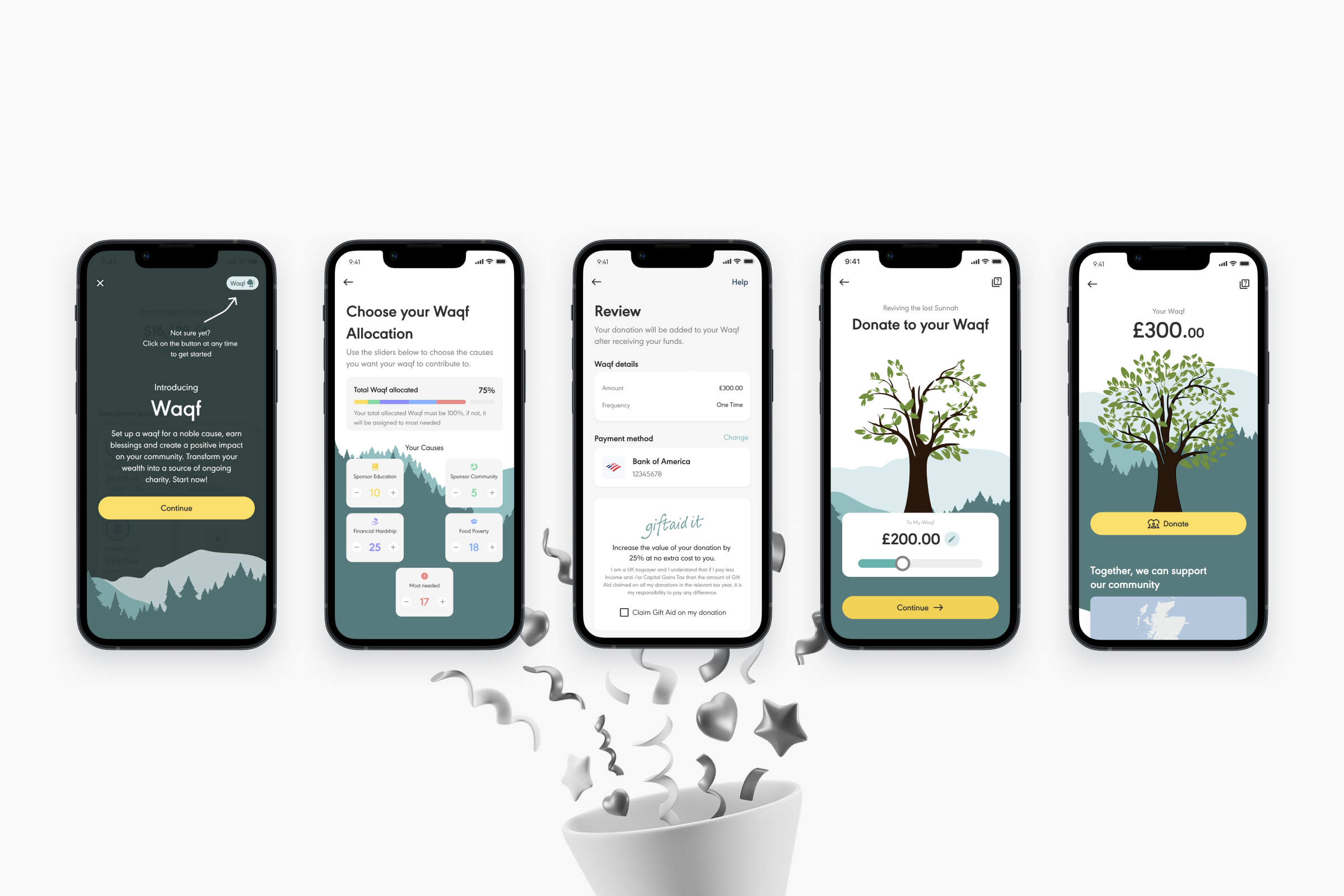
- 1 Project Manager
- 2 Developers
- Execs and Stakeholders
Context
The concept of Waqf, rooted in Islamic tradition, represents a unique form of charitable endowment aimed at providing continuous social benefits.
However, modern implementation of Waqf faces challenges such as lack of awareness, limited accessibility, and fragmented management of resources.
Despite its historical significance and potential for social impact, the traditional Waqf system struggles to fully harness contemporary technological advancements and engage a wider audience.
Opportunity
Leveraging modern technology to create a digital Waqf platform presents a compelling opportunity to revolutionise the way charitable endowments are managed and utilised.
By integrating features that facilitate easy contributions, transparent management, and impactful utilisation of Waqf funds, a digital platform can enhance community engagement and drive sustainable social development.
Research
Market
- Charitable giving via digital platforms is increasing, with 47% of Millennials donating through websites and 46% to crowdfunding campaigns.
- 59% of Gen Z donors are inspired by social media messages, suggesting that integrating social sharing features within the Waqf app could enhance engagement.
- Online giving grew by 9% last year, with the average online donation being $204. Additionally, 28% of all online donations were made using mobile devices, indicating a strong preference for digital and mobile-friendly donation platforms.
Target User
Advantages of Waqf
- Community Development: Waqf funds are often directed towards projects that have a significant positive impact on the community, such as building schools, hospitals, and infrastructure, thus contributing to overall social welfare and development.
- Sustainability: Waqf is designed to be a perpetual source of funding. The assets are preserved, and only the returns on these assets are used for charitable purposes, ensuring long-term sustainability.
- Ethical and Trustworthy: Waqf management is governed by Islamic ethical principles, ensuring transparency and integrity in the handling of funds. This builds trust among donors and beneficiaries.
- Religious Fulfilment: For Muslim donors, contributing to a Waqf is a way to fulfil their religious obligations of charity (Sadaqah) and creating lasting benefits (Sadaqah Jariyah).
Donors need a convenient that facilitates easy and transparent contributions, in order to engage effectively in charitable giving and track the impact of their donations.
White Paper
Research
Graph 1: Growth of Waqf Donations Over Time
This graph illustrates the upward trend in Waqf donations from 2019 to 2024. The data shows a consistent increase in contributions, with notable peaks during Ramadan and other significant Islamic events. This growth can be attributed to heightened awareness and the implementation of modern fintech solutions like blockchain, which have facilitated easier and more transparent donations. The increasing trend in Waqf donations highlights its importance in supporting sustainable community development, alleviating poverty, improving access to education and healthcare, and fostering economic stability in Muslim communities.
Graph 2: Allocation of Waqf Funds
The second graph provides an overview of how Waqf funds are allocated across different sectors. The majority of funds are directed towards education and healthcare, which are essential for community development. Significant portions are also allocated to social services and infrastructure projects, ensuring a balanced approach to addressing diverse community needs. This distribution reflects the strategic focus of Waqf institutions on enhancing societal welfare and sustainable development. By investing in these key areas, Waqf funds play a crucial role in promoting social equity, improving quality of life, and supporting resilient communities.
Our research unearthed several key findings:
- Limited awareness and understanding of Waqf among potential donors and beneficiaries.
- Lack of transparency and accountability in Waqf administration.
- Fragmentation of Waqf resources and initiatives.
- Challenges in identifying and accessing Waqf opportunities for community development.
Persona's
To ensure the Waqf platform effectively meets the needs of its diverse user base, we developed detailed personas through extensive user research, including interviews, surveys, and observational studies. Two primary personas emerged, each representing distinct user profiles crucial to the Waqf ecosystem.
The first persona embodied a deliberate and cautious approach to charitable giving, prioritising transparency and accountability in the management of their contributions. This user valued detailed reports and impact assessments, seeking reassurance that their donations were being used effectively.
The second persona reflected a more spontaneous and community-oriented approach to philanthropy. This user was motivated by a desire to support local initiatives and see the immediate impact of their contributions. They valued features that facilitated quick and easy donations to specific causes or projects within their community.
User Journey
Understanding these personas, we mapped out user journeys that encapsulate the diverse paths users might take within the Waqf platform. From initial awareness and exploration to making contributions and seeing the impact, each touchpoint was designed to provide a seamless and engaging experience.
Our aim was to integrate features that cater to both deliberate and spontaneous givers, ensuring the platform is accessible and intuitive for all users. By focusing on the unique motivations and behaviours of each persona, we crafted a user journey that fosters trust, engagement, and satisfaction.
Design
Adjusting Allocations
Causes Allocation
Users can adjust the percentage of their donation that goes to each allocation category. The available causes include Ease Financial Hardship, Food Poverty, Financial Hardship, Sponsoring Community, and Most Needed. Users can allocate their donation according to their preferences and priorities. We partner with nationwide charities to ensure that the donations are utilised effectively for these causes. Once satisfied with the allocation, users save their preferences.

Donating
Donation Amount
Users are greeted with a screen asking how much they would like to donate. They can either use a slider to select a predefined amount or enter a custom donation amount manually. Once the donation amount is set, users proceed by confirming the amount.
Review Screen
Users are then taken to a review screen where they can check the donation amount and payment details. If eligible, users can opt to add Gift Aid to their donation. After reviewing the details, users click on the confirm donation button.
Confirmation Screen
After confirming their donation, users are shown a confirmation screen. This screen confirms their donation and prompts them to adjust the percentage allocation of their donation to different causes.
Returning Users
If users have donated before, they are taken directly to their dashboard after confirming the donation, bypassing the allocation screen. The dashboard displays their donation history and other relevant information.
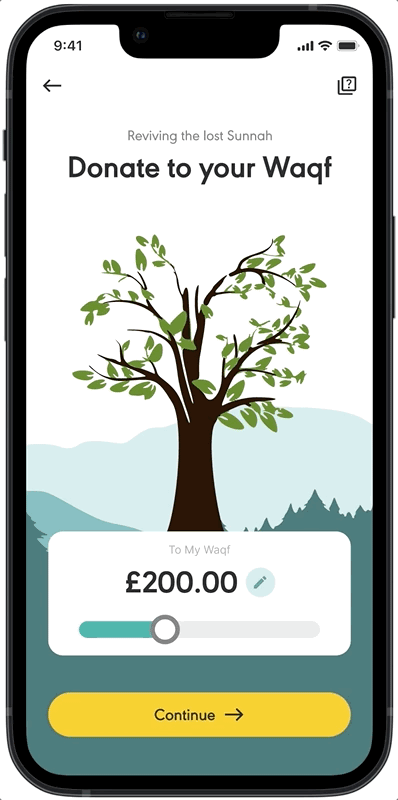
Next Steps
In the next phase of the Waqf platform, several key initiatives will enhance user engagement and community impact. Firstly, we will introduce regional Waqfs, allowing users to contribute specifically to their local areas. This feature will foster deeper community connections and address local needs more effectively, increasing users' sense of ownership and involvement.
Secondly, a new feature will enable users to donate to other individuals' Waqfs, promoting solidarity and mutual support within the community. This peer-to-peer donation capability will empower users to directly help others achieve their philanthropic goals, fostering a stronger sense of community.
Lastly, we will run targeted campaigns during significant giving occasions like Ramadan, a period when charitable giving peaks. For example, during Ramadan 2020, over £150 million* was donated to charity (* Islamic Relief UK). These campaigns will amplify the impact of users' donations during key moments, maximising community engagement and support for critical causes.
Final Thoughts
Reflecting on the journey of developing the Waqf platform, it's clear that our vision of fostering community empowerment and collective impact has been brought to life through thoughtful design and innovation. From the initial research and persona development to wireframing and feature implementation, every step has been guided by a commitment to serving the diverse needs of our Waqf community.
As we continue to iterate and refine the platform, our focus remains steadfast on empowering individuals to make meaningful contributions and drive positive change through the spirit of Waqf. The next steps will build upon this foundation, ensuring that the platform continues to evolve in ways that resonate with and serve its users effectively.
Together, we are building a future where compassion, solidarity, and collective action guide us towards a brighter tomorrow.
